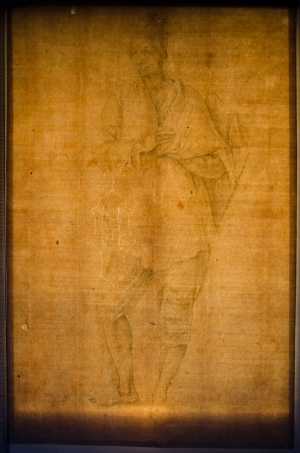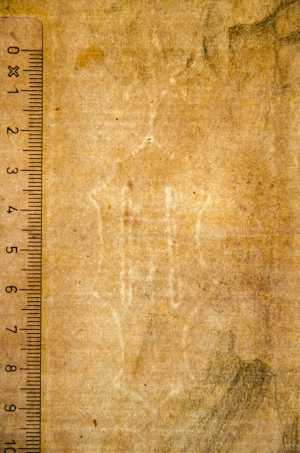Specifications
| Title | Standing Male Figure with a Tall Hat |
|---|---|
| Material and technique | Black chalk |
| Object type |
Drawing
> Two-dimensional object
> Art object
|
| Location | This object is in storage |
| Dimensions |
Height 325 mm Width 212 mm |
|---|---|
| Artists |
Previously attributed:
Giuseppe Cesari il Cavaliere d'Arpino
Draughtsman: Anoniem |
| Accession number | I 554 (PK) |
| Credits | Loan Stichting Museum Boijmans Van Beuningen (former Koenigs collection), 1940 |
| Department | Drawings & Prints |
| Acquisition date | 1940 |
| Creation date | in circa 1525-1575 |
| Watermark | ladder in shield with six-pointed star (91 x 32 mm, left of center, standing, on P3 of 6P, vH, circumscribed folio); similar to Briquet nos. 5926, 5927 (Florence/Siena/Pisa 1524-1533) and Piccard AT8100-PO-122766 (Barcelona 1533), DE4620-PO-122767 (Krakow 1531) DE5580-Codgraec133_17 (Padua 1566). The same subtype (wide ladder with parallel uprights) occurs in drawings by Michelangelo (type Ladder F in Roberts 1988, p. 23, ill.), dated 1525-1528. This type also occurs in contemporary printed maps, see Woodward 1996, pp. 146-151, nos. 243-254 (mostly Italian, 1552-1570) |
| Inscriptions | [?] (lower left, black chalk); [?] (verso, lower middle, black chalk) |
| Collector | Collector / Franz Koenigs |
| Mark | F.W. Koenigs (L.1023a) |
| Provenance | Franz W. Koenigs (1881-1941, L.1023a), Haarlem, acquired in 1931 (North Italian, 16th century); D.G. van Beuningen (1877-1955), Rotterdam, acquired with the Koenigs Collection in 1940 and donated to Stichting Museum Boijmans Van Beuningen |
| Research |
Show research Italian Drawings 1400-1600 |
| Material | |
| Object | |
| Geographical origin | Italy > Southern Europe > Europe |
Do you have corrections or additional information about this work? Please, send us a message

























